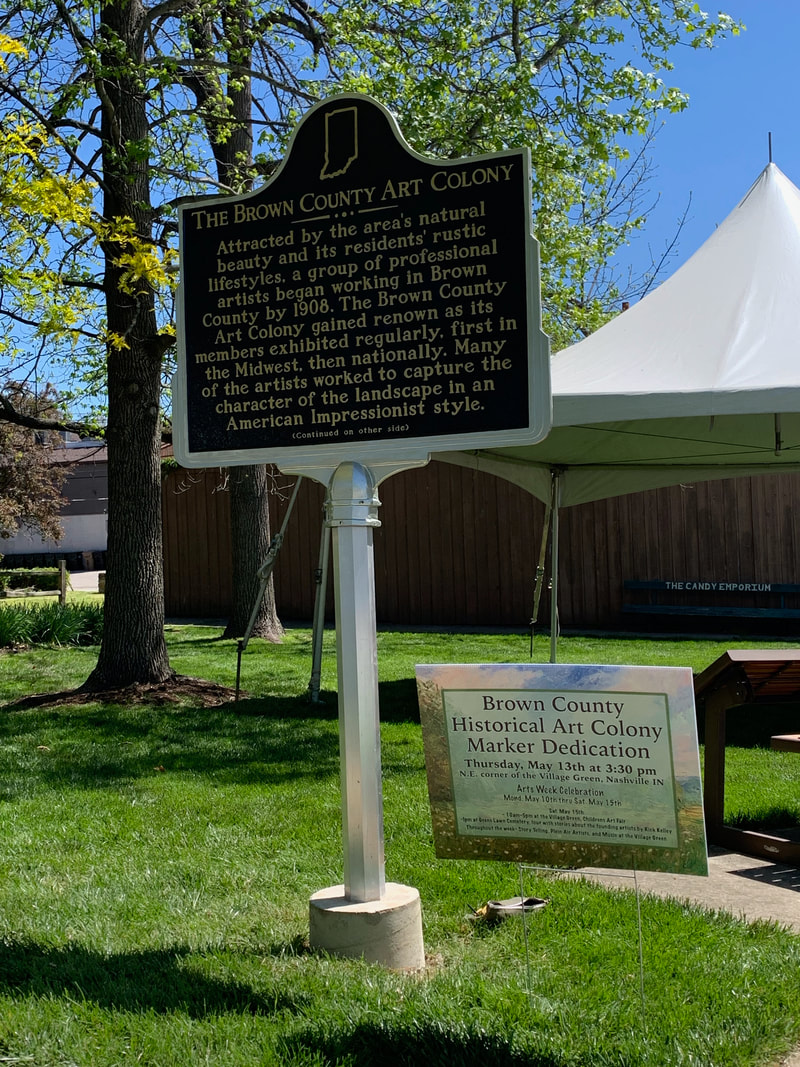|
TRULY, this blog should be about Three Notch Road and the history connected to this area of Brown County. Folk lore and settlers, many from Ohio. Churches were normally a place to gather but this road had an extra element, a stagecoach stop, and wagon traffic made Three Notch Road a busy thoroughfare. One of the stories tell how the road got its name. It was said to be the equivalent of St. Hwy. 135 widely used by people going north, even to Indianapolis and beyond. There was a sawmill or two at the top of the hill on Three Notch that led out of the valley. The horses that pulled heavy loads of logs needed a place to rest and because most roads were narrow due to the terrain, those going in opposite directions needed wider sections to pass each other. Those places were called a notch, hence that is how Three Notch Road got its name. So as people came to bring their families and make homes, they traveled this road to find a place to call home. The Taggart area was settled in 1834 before Brown County became a county on its own. Quite possibly Taggart sent word back to friends and relatives in Ohio. The first settler of record, on this ridge, was James McIlvain, who in 1841 got six different land grants on this ridge that totaled 520 acres. The ridge was suitable for farms, livestock and his home but it required clearing before that could begin. The village of Taggart was nearby, and the village of Mead was just to the north. Nashville and Williamsburg both had been settled much earlier and were growing with commerce and trade. Years of successful farming gave McIlvain the money to build his home in the 1850s, a gable-front Greek Revival two story house for his family of nine. The house served several purposes, i.e., social gatherings and a stagecoach stop where passengers could refresh, buy a meal and spend the night. Families by the names of Ford, Fordyce, Groves, Campbell, Slack and Slevin settled along Three Notch Road. They wanted a church near them and wanting to bring his faith to his new home, James donated a small portion of his land to the Trustees of Mount Zion Methodist Episcopal Church in 1873 for the purpose of a one room church, where he was a steward for 45 years. Construction of the church building had to be delayed with the start of the Civil War. The McIlvain brothers and Uriah Ford served in the war. Many families are buried in Zion Cemetery and as it grew it was made larger by land donated by Uriah Ford and John Mead. James W. McIlvain died in 1887 and is buried in the Mt. Zion Church Cemetery. Today the cemetery is maintained by the local community and volunteers with the Peaceful Valley Heritage Preservation Society's Cemetery Committee. Ninety percent of the historical monuments and tombstones have been professionally restored. The church was claimed by descendants of an originally family and has lain waste to ruin. The church bell was made in 1897 by the Shane Bell Company, Baltimore, MD, and now is on display in the Brown County Historical Society History Center for all to see. The two-story home, known as Pinehurst, is still standing just south of Zion Cemetery. It is in poor condition but is still a home. It no longer has the two story porch shown in the attached picture. It must have a tale of folklore to go with its legend. As the story goes, the first corpse to be embalmed in Brown County was in Pinehurst where curious folks gathered around to watch. Unfortunately, the body caught on fire and that was the end of the tale. The story covers over 180 years of history. You have heard the age old adage, "IF walls could talk." As we wonder about here, it should be, "If roads could talk!" Self Guided Tour Stop # 5 Directions to the next stop, Hamblen Cemetery
0 Comments
Leave a Reply. |
Archives
June 2023
Categories |

 RSS Feed
RSS Feed